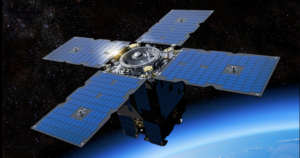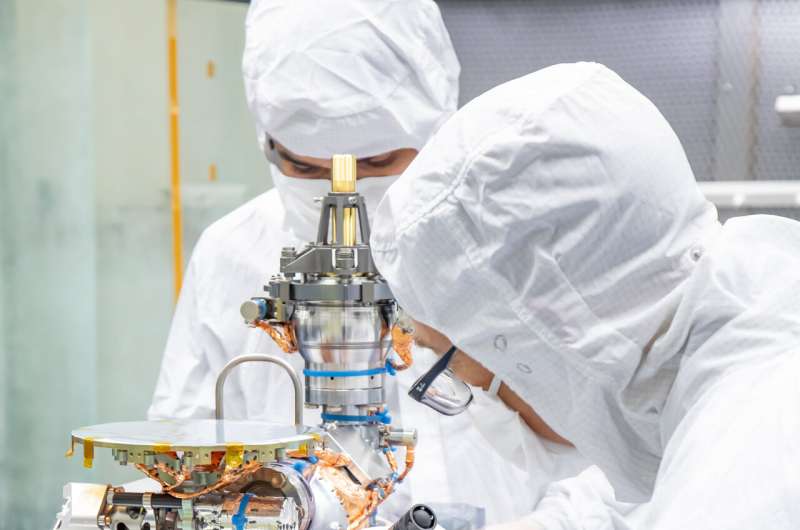Black carbon aerosols accelerate loss of glacial mass over the Tibetan plateau
Friday, 06 January 2023 08:33 Black carbon aerosols are produced by the incomplete combustion of fossil fuels and biomass, and are characterized by strong light absorption. Black carbon deposition in snow/ice reduces the albedo of snow/ice surfaces, which may accelerate the melting of glaciers and snow cover, thus changing the hydrological process and water resources in the region.
The South Asia region adjacent to the
Black carbon aerosols are produced by the incomplete combustion of fossil fuels and biomass, and are characterized by strong light absorption. Black carbon deposition in snow/ice reduces the albedo of snow/ice surfaces, which may accelerate the melting of glaciers and snow cover, thus changing the hydrological process and water resources in the region.
The South Asia region adjacent to the Stellantis to build electric aircraft with Archer and provide strategic funding for growth
Friday, 06 January 2023 08:33 Stellantis N.V. (NYSE / MTA / Euronext Paris: STLA) and Archer Aviation Inc. (NYSE: ACHR) have agreed to significantly expand their partnership by joining forces to manufacture Archer's flagship electric vertical take-off and landing (eVTOL) aircraft, Midnight.
Stellantis will work with Archer to stand up Archer's recently announced manufacturing facility in Covington, Georgia at which the
Stellantis N.V. (NYSE / MTA / Euronext Paris: STLA) and Archer Aviation Inc. (NYSE: ACHR) have agreed to significantly expand their partnership by joining forces to manufacture Archer's flagship electric vertical take-off and landing (eVTOL) aircraft, Midnight.
Stellantis will work with Archer to stand up Archer's recently announced manufacturing facility in Covington, Georgia at which the Webb reveals Milky Way-like galaxies in early universe
Friday, 06 January 2023 07:08 New images from NASA's James Webb Space Telescope (JWST) reveal for the first time galaxies with stellar bars - elongated features of stars stretching from the centers of galaxies into their outer disks - at a time when the universe was a mere 25% of its present age. The finding of so-called barred galaxies, similar to our Milky Way, this early in the universe will require astrophysicists to ref
New images from NASA's James Webb Space Telescope (JWST) reveal for the first time galaxies with stellar bars - elongated features of stars stretching from the centers of galaxies into their outer disks - at a time when the universe was a mere 25% of its present age. The finding of so-called barred galaxies, similar to our Milky Way, this early in the universe will require astrophysicists to ref Physicists confirm effective wave growth theory in space
Friday, 06 January 2023 07:08 A team from Nagoya University in Japan has observed, for the first time, the energy transferring from resonant electrons to whistler-mode waves in space. Their findings offer direct evidence of previously theorized efficient growth, as predicted by the non-linear growth theory of waves. This should improve our understanding of not only space plasma physics but also space weather, a phenomenon th
A team from Nagoya University in Japan has observed, for the first time, the energy transferring from resonant electrons to whistler-mode waves in space. Their findings offer direct evidence of previously theorized efficient growth, as predicted by the non-linear growth theory of waves. This should improve our understanding of not only space plasma physics but also space weather, a phenomenon th EOSDA launches first satellite on Transporter-6 mission
Friday, 06 January 2023 07:08 On January 3, 2023, EOS SAT-1, the initial satellite of EOS SAT, the first agri-focused satellite constellation launched by a remote sensing company, was successfully delivered into a low Earth orbit by SpaceX's Falcon 9 rocket from the Cape Canaveral Space Force Station in Florida.
EOS SAT is a constellation consisting of seven small optical satellites created by EOS Data Analytics, a glo
On January 3, 2023, EOS SAT-1, the initial satellite of EOS SAT, the first agri-focused satellite constellation launched by a remote sensing company, was successfully delivered into a low Earth orbit by SpaceX's Falcon 9 rocket from the Cape Canaveral Space Force Station in Florida.
EOS SAT is a constellation consisting of seven small optical satellites created by EOS Data Analytics, a glo SwRI delivers innovative instrument for NASA's Europa Clipper mission
Friday, 06 January 2023 07:08 A groundbreaking new mass spectrometer designed and built by Southwest Research Institute (SwRI) has been delivered for integration onto NASA's Europa Clipper spacecraft. Scheduled to launch in 2024 and arrive in the Jovian system by 2030, Europa Clipper will conduct a detailed science investigation of the moon Europa and study whether it could harbor conditions suitable for life.
The MAss
A groundbreaking new mass spectrometer designed and built by Southwest Research Institute (SwRI) has been delivered for integration onto NASA's Europa Clipper spacecraft. Scheduled to launch in 2024 and arrive in the Jovian system by 2030, Europa Clipper will conduct a detailed science investigation of the moon Europa and study whether it could harbor conditions suitable for life.
The MAss KSAT to support NOAA's Deep Space Solar Observatory
Friday, 06 January 2023 07:08 KBR has selected KSAT to provide all Outside the Continental United States (OCONUS) SWFO Antenna Network (SAN) services. The KBR and KSAT team are developing a blended network including U.S. government ground station sites with KSAT-owned capabilities delivered as a service.
Increased solar activity in recent weeks has provided opportunities for many in the Northern Hemisphere to view the
KBR has selected KSAT to provide all Outside the Continental United States (OCONUS) SWFO Antenna Network (SAN) services. The KBR and KSAT team are developing a blended network including U.S. government ground station sites with KSAT-owned capabilities delivered as a service.
Increased solar activity in recent weeks has provided opportunities for many in the Northern Hemisphere to view the Strengthening electron-triggered light emission
Friday, 06 January 2023 07:08 The way electrons interact with photons of light is a key part of many modern technologies, from lasers to solar panels to LEDs. But the interaction is inherently a weak one because of a major mismatch in scale: A wavelength of visible light is about 1,000 times larger than an electron, so the way the two things affect each other is limited by that disparity.
Now, researchers at MIT and el
The way electrons interact with photons of light is a key part of many modern technologies, from lasers to solar panels to LEDs. But the interaction is inherently a weak one because of a major mismatch in scale: A wavelength of visible light is about 1,000 times larger than an electron, so the way the two things affect each other is limited by that disparity.
Now, researchers at MIT and el Iridium and Qualcomm collaborate to support satellite messaging in smartphones
Friday, 06 January 2023 07:08 Iridium Communications Inc. (Nasdaq: IRDM) has entered into an agreement with Qualcomm Technologies, Inc. to enable satellite messaging and emergency services in smartphones powered by Snapdragon Mobile Platforms. Qualcomm Technologies' new Snapdragon Satellite solution is supported by the fully operational Iridium satellite constellation. Emergency messaging using Snapdragon Satellite is expect
Iridium Communications Inc. (Nasdaq: IRDM) has entered into an agreement with Qualcomm Technologies, Inc. to enable satellite messaging and emergency services in smartphones powered by Snapdragon Mobile Platforms. Qualcomm Technologies' new Snapdragon Satellite solution is supported by the fully operational Iridium satellite constellation. Emergency messaging using Snapdragon Satellite is expect Quectel expands its 5G and GNSS Combo Antennas Portfolio
Friday, 06 January 2023 07:08 Quectel Wireless Solutions, a global IoT solutions provider, has launched three new combo antennas to help IoT solution designers and developers optimize device performance.
Each new combo antenna has been designed to offer maximized choice and performance for IoT deployments so customers can ensure their devices can access the connectivity they need across a variety of wireless technologi
Quectel Wireless Solutions, a global IoT solutions provider, has launched three new combo antennas to help IoT solution designers and developers optimize device performance.
Each new combo antenna has been designed to offer maximized choice and performance for IoT deployments so customers can ensure their devices can access the connectivity they need across a variety of wireless technologi Voyager Space and Airbus announce partnership for Starlab Space Station
Friday, 06 January 2023 07:08 Voyager Space and Airbus Defence and Space are partnering to develop and operate Starlab, a free-flying space station to serve the National Aeronautics and Space Administration (NASA) and a global customer base of space agencies and researchers. Starlab is planned to be launched in 2028 to ensure a continued human presence in Low-Earth Orbit (LEO).
Airbus Defence and Space will provide tec
Voyager Space and Airbus Defence and Space are partnering to develop and operate Starlab, a free-flying space station to serve the National Aeronautics and Space Administration (NASA) and a global customer base of space agencies and researchers. Starlab is planned to be launched in 2028 to ensure a continued human presence in Low-Earth Orbit (LEO).
Airbus Defence and Space will provide tec General Atomics selected to build satellite for AFRL cislunar mission
Thursday, 05 January 2023 20:30
General Atomics Electromagnetic Systems won a contract from Advanced Space to build a satellite the Air Force Research Laboratory plans to launch to deep space in 2025.
The post General Atomics selected to build satellite for AFRL cislunar mission appeared first on SpaceNews.
Iridium and Qualcomm to bring satellite connectivity to smartphones this year
Thursday, 05 January 2023 19:50
Iridium unveiled chip maker Qualcomm Jan. 5 as the partner behind plans to connect smartphones to its satellite constellation this year.
The post Iridium and Qualcomm to bring satellite connectivity to smartphones this year appeared first on SpaceNews.
New mass spectrometer for NASA's Europa Clipper mission
Thursday, 05 January 2023 17:48
Virgin Orbit preparing for first U.K. launch
Thursday, 05 January 2023 12:17
After technical and licensing delays, Virgin Orbit is gearing up for its first launch from the United Kingdom as soon as Jan. 9.
The post Virgin Orbit preparing for first U.K. launch appeared first on SpaceNews.

